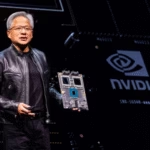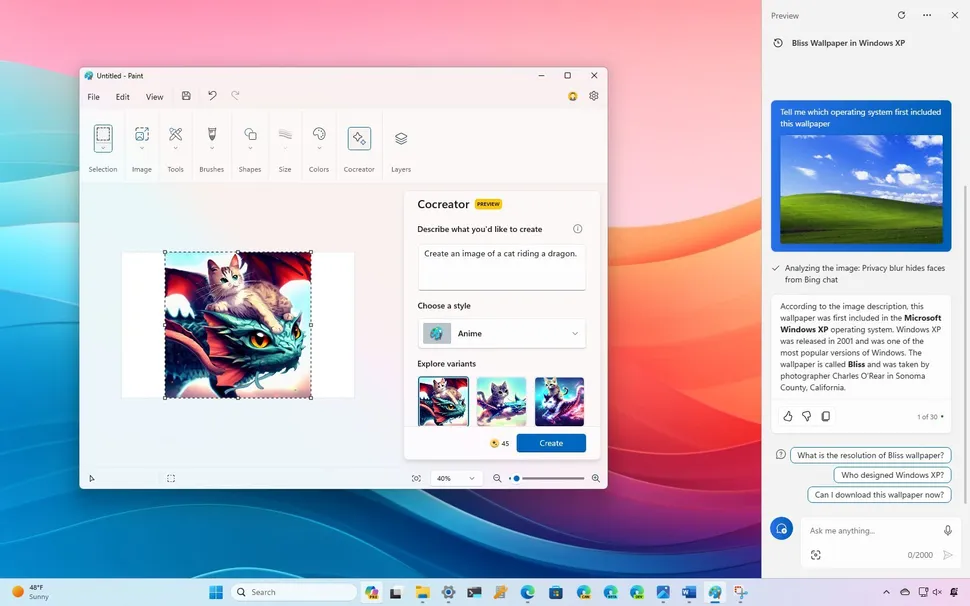The AMD AI chip challenge Nvidia 2025: Reshaping the AI Hardware Landscape
Estimated reading time: 8 minutes
Key Takeaways
- The explosive growth of AI has created an unprecedented demand for specialized AI chips.
- AMD is aggressively positioning itself to challenge Nvidia’s dominance in the AI hardware market by 2025.
- Nvidia’s current lead is built on its powerful GPUs (H100, Blackwell) and the industry-standard `CUDA software platform`.
- AMD’s strategy hinges on the upcoming `new AMD MI400 AI accelerators`, set for release in 2026, boasting significant advancements in memory and compute.
- The `Instinct MI400 series` aims to directly compete with Nvidia’s future offerings, featuring up to 432GB of HBM4 memory and 19.6TB/sec bandwidth.
- Beyond hardware, AMD is strengthening its `ROCm platform` and leveraging a crucial `OpenAI partnership` to bolster its software ecosystem.
- Success for AMD involves achieving substantial `market share gains`, `widespread adoption` of the MI400, and `software ecosystem maturity`.
- The `future of AI chip market 2028` may see a more balanced duopoly or the rise of custom silicon.
Table of Contents
- The AMD AI chip challenge Nvidia 2025: Reshaping the AI Hardware Landscape
- Key Takeaways
- Setting the Stage for the AI Chip Showdown
- Nvidia’s Reign: Understanding the Current AI Chip Landscape
- AMD’s Counter-Offensive: Strategy and the new AMD MI400 AI accelerators
- The Performance Showdown: AMD vs Nvidia AI chip performance
- Beyond Hardware: Software, Ecosystem, and Strategic Alliances
- The Road to 2025: Milestones in AMD’s Challenge
- Looking Ahead: The future of AI chip market 2028
- Challenges and Opportunities for AMD
- Conclusion: A New Era for AI Hardware?
- Frequently Asked Questions
Setting the Stage for the AI Chip Showdown
The landscape of technology is being rapidly reshaped by the explosive growth of artificial intelligence. From automating complex tasks to powering groundbreaking discoveries in scientific research, AI is transforming virtually every sector imaginable. This pervasive integration, however, places unprecedented and rapidly escalating demands on the underlying hardware – specifically, specialized AI chips or accelerators. These powerful silicon brains are the very foundation upon which modern AI models, particularly large language models (LLMs) and sophisticated neural networks, are trained and deployed.
Amidst this transformative era, a monumental showdown is brewing in the heart of the AI hardware market: the `AMD AI chip challenge Nvidia 2025`. This blog post will immediately establish its core topic: AMD’s ambitious, calculated challenge to Nvidia. By 2025, AMD is positioning itself for a disruptive leap, aiming to fundamentally reshape a landscape currently dominated by Nvidia, the incumbent leader in AI hardware. It’s a strategic move that reflects AMD’s deep commitment to becoming a formidable force in the data center and AI segments.

Nvidia, through years of foresight and relentless innovation, has carved out an almost unchallenged market leadership. Its powerful GPUs, initially designed for graphics rendering, proved serendipitously perfect for the parallel processing demands of AI. Coupled with an unmatched software ecosystem, Nvidia has created a deeply entrenched position. The question isn’t just if AMD can build comparable hardware, but if it can disrupt a complete, cohesive ecosystem that has fostered immense developer loyalty. This is not merely a battle of specifications; it’s a strategic chess match where every move, from silicon design to software alliances, will determine who holds the reins of the future AI infrastructure. According to recent reports, Nvidia’s leadership has been reinforced by strategic maneuvers, making any challenge a truly formidable undertaking.
Nvidia’s Reign: Understanding the Current AI Chip Landscape
Nvidia’s journey to AI chip dominance is a compelling narrative of strategic foresight and continuous innovation. For years, the company has not just participated in the market; it has largely defined it. Their leadership isn’t accidental; it’s rooted in a dual foundation of cutting-edge hardware and an unparalleled software ecosystem. On the hardware front, Nvidia’s prowess is epitomized by their flagship accelerators, particularly the `H100` Tensor Core GPU, which has become the gold standard for AI training and inference in data centers worldwide. Looking ahead, the much-anticipated `Blackwell architecture` promises to further solidify their hardware lead, pushing the boundaries of compute performance and efficiency.
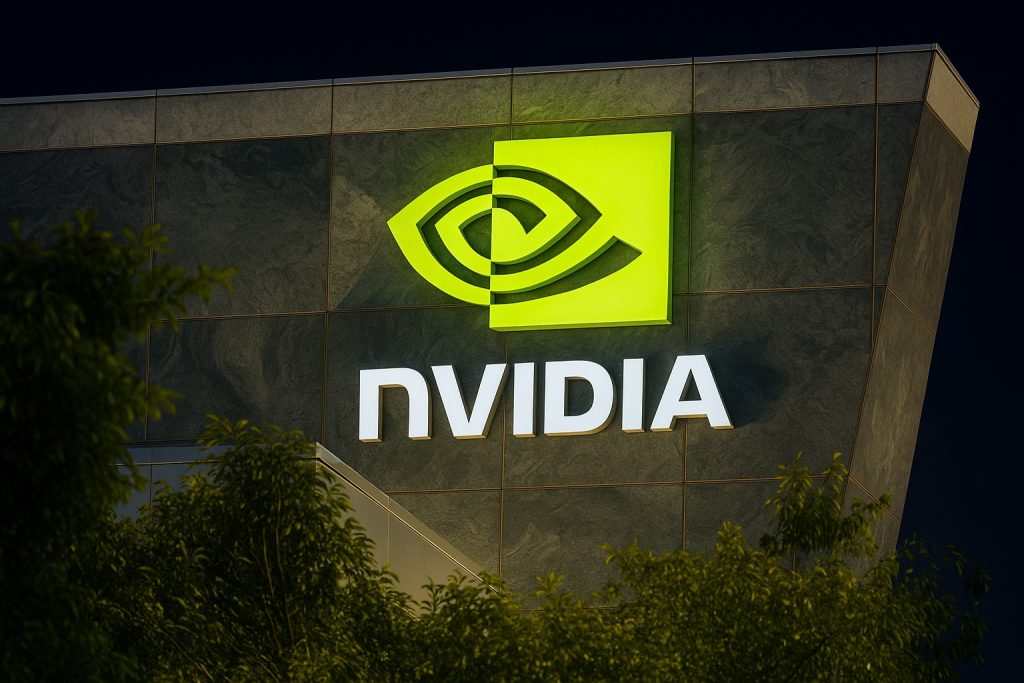
However, the true cornerstone of Nvidia’s entrenched position isn’t just raw silicon power; it’s the `CUDA software platform`. Launched in 2006, long before “AI” became a household term, CUDA provided developers with a robust, high-performance programming model for Nvidia GPUs. This foresight allowed developers to build libraries, frameworks, and applications that were deeply optimized for Nvidia’s architecture. As AI began its exponential ascent, CUDA became the de facto industry standard for deep learning research and deployment. Virtually every major AI framework, from TensorFlow to PyTorch, is meticulously optimized for CUDA, creating a powerful network effect. Developers are trained in CUDA, research papers are often validated on CUDA-powered systems, and academic institutions rely on it. This creates a formidable barrier to entry for competitors.
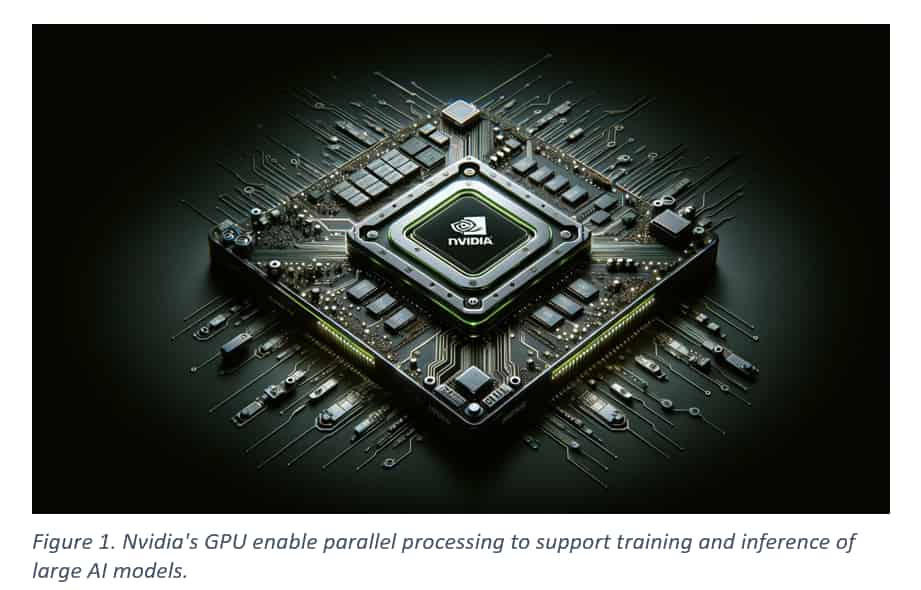
Nvidia’s GPUs have, therefore, become the default choice for AI researchers, hyperscale cloud providers, and enterprises due to a potent combination of factors:
- Raw Compute Power: Delivering staggering `FLOPS` (floating-point operations per second) essential for massive AI model training.
- High Memory Bandwidth: Crucial for feeding large datasets to the GPU quickly, minimizing bottlenecks.
- Seamless Integration: A mature and comprehensive software stack that integrates effortlessly with critical AI frameworks and development tools.
This synergy of hardware and software, cultivated over nearly two decades, combined with deep developer loyalty and a first-mover advantage, is precisely what underpins Nvidia’s remarkably entrenched position in the highly competitive AI chip arena. Their dominance is so profound that any rival seeking to challenge them must not only match their hardware but also offer a compelling, competitive, and equally robust software alternative. Indeed, AI chip demand fuels Nvidia‘s continued expansion, making the challenge even steeper.
AMD’s Counter-Offensive: Strategy and the new AMD MI400 AI accelerators
Recognizing the monumental growth of AI and the strategic importance of data centers, AMD has executed a deliberate and dramatic pivot, significantly increasing its investment and focus on these critical segments. This isn’t a mere foray; it’s a clear declaration of intent to disrupt Nvidia’s well-established lead and carve out a substantial market share. AMD’s strategy is multi-faceted, combining aggressive hardware innovation with a concerted effort to build a competitive software ecosystem.
The centerpiece of AMD’s ambitious strategy is the introduction of the `new AMD MI400 AI accelerators`, specifically the `Instinct MI400 series`. These next-generation accelerators are not just incremental upgrades; they are designed from the ground up to be direct, formidable competitors to Nvidia’s top-tier offerings. Set to launch in 2026, the MI400 series represents AMD’s deepest commitment yet to high-performance AI computing. Their anticipated architectural advancements are meticulously engineered to address the most demanding aspects of AI workloads, aiming for parity or even superiority in key metrics:

- Memory: One of the most critical aspects for AI training, particularly with massive models, is memory capacity and bandwidth. The MI400 series is slated to feature up to `432GB of HBM4 memory`. This represents a significant leap, offering an astonishing `19.6TB/sec bandwidth`. To put that into perspective, this is more than double the memory bandwidth of their previous generation, making it incredibly well-suited for handling the ever-growing parameter counts and dataset sizes of modern AI models. This capacity is particularly vital for deployments in `double wide AI racks`, where density and aggregate performance are paramount.
- Compute Performance: Raw compute power is the engine of AI. The MI400 is projected to deliver `40 PFLOPs (FP4)` and `20 PFLOPs (FP8)`. This significant boost represents a twofold increase over the MI350 series, showcasing AMD’s aggressive scaling of its compute capabilities. These metrics indicate a clear intention to meet, and potentially exceed, the computational demands of future AI breakthroughs.
- Interconnects: For massive, distributed AI workloads that span multiple GPUs and servers, efficient `interconnects` are non-negotiable. AMD has focused on enhanced `interconnects` and scale-out bandwidth, achieving `300GB/sec per GPU`. This high bandwidth ensures that data can flow seamlessly between accelerators, minimizing bottlenecks and maximizing the efficiency of large-scale AI training clusters.
AMD’s ambition extends beyond just individual accelerators. They are also focusing on delivering these chips at scale, envisioning complete AI solutions. This involves pairing the MI400 series with their upcoming `EPYC “Venice” CPUs`, which are designed to provide robust host processing capabilities, and new networking solutions. This integrated approach aims to enable seamless, high-performance deployment in the most demanding large data centers, offering a complete stack solution that rivals Nvidia’s established offerings. AMD is making it clear: they are not just selling chips; they are selling a comprehensive AI infrastructure solution.
The Performance Showdown: AMD vs Nvidia AI chip performance
The true measure of AMD’s challenge lies in the anticipated `AMD vs Nvidia AI chip performance` metrics. As the `MI400 series` gears up for its 2026 launch, the industry’s eyes are fixed on how it will stack up against Nvidia’s future offerings, particularly the anticipated `Rubin R100 GPUs`, which are also expected to leverage HBM4 memory. This direct competition at the bleeding edge of technology marks a crucial inflection point in the AI hardware race.

Initial specifications and architectural insights suggest that AMD is aggressively closing the hardware gap. Performance metrics such as `FLOPS (floating-point operations per second)`, `memory capacity`, and `bandwidth` are the primary battlegrounds. With `40 PFLOPs (FP4)` and `20 PFLOPs (FP8)` for the MI400, AMD is clearly targeting a twofold increase over its predecessors, positioning it to contend directly with Nvidia’s next-gen compute engines. The remarkable `432GB of HBM4 memory` with `19.6TB/sec bandwidth` ensures that the MI400 will not be starved for data, a critical factor for training increasingly complex large language models (LLMs) and handling immense datasets.
To illustrate the scale of AMD’s ambition, consider a concrete example: the `Helios AI rack`. This formidable system, powered by `72 MI400 GPUs`, is projected to offer an astounding `2.9 exaFLOPs (FP4)` and `1.4 exaFLOPs (FP8)`. These figures are not just impressive on paper; they represent an aggregate compute power that directly rivals Nvidia’s most ambitious system designs, indicating AMD’s capability to deliver solutions for the largest, most demanding AI supercomputing workloads. Such performance at the rack level suggests that AMD is thinking beyond individual chip performance, focusing on seamless scale-out for hyperscalers and major research institutions.
However, acknowledging the complexities of `real-world performance` benchmarks is crucial. While specifications paint an exciting picture, actual performance depends heavily on several interconnected factors:
- Software Optimizations: The efficiency with which AI frameworks and models leverage the hardware.
- Workload Compatibility: How well the hardware performs across diverse tasks, including training, inference, and specialized large language models.
- Ecosystem Maturity: The breadth and depth of developer tools, libraries, and community support available.
Nvidia’s long-standing lead in software optimization and ecosystem development provides a significant advantage. AMD’s ability to translate its raw hardware power into real-world performance gains will ultimately hinge on the success of its software efforts. The performance showdown isn’t just about who has the faster chip; it’s about who offers the most efficient, accessible, and integrated platform for the entire AI lifecycle.
Beyond Hardware: Software, Ecosystem, and Strategic Alliances
In the high-stakes AI chip battle, the sheer horsepower of silicon is only one part of the equation. The contest is equally, if not more, about software and ecosystem support. Nvidia’s nearly two-decade head start with `CUDA` has created a formidable moat, a deeply entrenched developer base, and a vast library of optimized AI applications. AMD, fully aware of this challenge, is making strenuous efforts to strengthen its `ROCm platform`.
ROCm (Radeon Open Compute) is AMD’s open-source software stack for GPU computing. Its purpose is clear: to provide a robust, competitive, and accessible alternative to CUDA for AI developers. AMD has been investing heavily in ROCm, improving its libraries, tools, and framework integrations to make it easier for developers to migrate workloads and build new applications. The push towards an open-source model is strategic; it aims to foster a collaborative environment, attract more developers, and ultimately accelerate the platform’s maturity and adoption. AMD is working to ensure ROCm offers performance parity with CUDA for a wide range of AI workloads, a critical factor for gaining developer trust and widespread adoption.
Perhaps the most significant development in AMD’s ecosystem strategy is the crucial significance of the `OpenAI partnership AMD AI`. This collaboration is a powerful validator for ROCm’s credibility and capabilities. OpenAI, a vanguard in AI research and development, particularly known for its pioneering work with large language models like ChatGPT, has traditionally relied heavily on Nvidia infrastructure. A strategic partnership with AMD signals a critical shift and a vote of confidence in AMD’s hardware and software stack. This collaboration is not just symbolic; it involves deep technical cooperation to optimize OpenAI’s cutting-edge models for AMD’s Instinct accelerators and the ROCm platform. This direct engagement provides invaluable feedback for ROCm development, accelerating its maturity and ensuring it can handle the most demanding AI workloads.

This partnership clarifies AMD’s commitment to supporting cutting-edge AI applications. By working directly with a leader like OpenAI, AMD gains insights into future AI computing requirements and can tailor its hardware and software accordingly. More importantly, this collaboration is key to attracting a broader developer base to their platform. When a major player like OpenAI endorses and actively works with ROCm, it sends a powerful message to the wider AI community, potentially encouraging more developers, researchers, and enterprises to explore and adopt AMD’s solutions. It’s a strategic alliance that aims to break Nvidia’s software monopoly and establish ROCm as a viable, high-performance alternative for the AI era.
The Road to 2025: Milestones in AMD’s Challenge
A successful `AMD AI chip challenge Nvidia 2025` is not a single event but a cumulative series of strategic achievements. For AMD to prove its competitive stance and truly disrupt Nvidia’s dominance, it must hit specific, measurable milestones by the target year. These milestones will serve as indicators of its progress and market acceptance:

- Achieving Significant Market Share Gains: The ultimate measure of success will be AMD’s ability to significantly increase its slice of the AI data center market. This includes securing substantial orders from major cloud providers (hyperscalers like Azure, Google Cloud, AWS) and large enterprises that are heavily investing in AI infrastructure. Moving from a niche player to a consistent second-place contender, or even challenging for market leadership in specific segments, will be crucial.
- Ensuring Widespread Adoption of the MI400 Series: Beyond initial orders, sustained and widespread adoption of the MI400 series by a diverse range of customers – from AI startups to established tech giants – will be vital. This means proving that the MI400 is not just a high-performance chip but a reliable, easily deployable, and cost-effective solution for real-world AI workloads.
- Further Advancing the ROCm Software Ecosystem: AMD must continue to aggressively develop and refine its `ROCm software ecosystem` and developer tools. This includes ensuring robust support for all major AI frameworks (e.g., PyTorch, TensorFlow, JAX), providing comprehensive documentation, offering extensive training resources, and fostering a vibrant developer community. The ease of development and deployment on ROCm must approach or exceed that of CUDA to entice widespread migration.
- Proving Reliability and Performance Parity (or Superiority) in Key AI Workloads: Benchmarks are one thing, but consistent, reliable performance in production environments is another. AMD needs to demonstrate that the MI400 and its ecosystem can deliver competitive or superior performance in critical AI workloads, including large language model training, inference, computer vision, and scientific simulations. This requires real-world validation from customers and independent third-party benchmarks.
Several critical factors could drive customers to choose AMD over Nvidia in the coming years. `Cost-effectiveness` is a powerful incentive, especially for hyperscalers operating at massive scale. If AMD can offer comparable performance at a lower total cost of ownership (TCO) – considering both hardware and power consumption – it could sway significant market segments. `Supply chain reliability` is another crucial factor; the recent past has highlighted the vulnerability of single-vendor dependencies. Diversifying hardware suppliers reduces risk. Finally, `seamless integration` with existing AI infrastructure and software stacks will be key. While AMD is pushing ROCm, offering compatibility layers or easy migration paths could accelerate adoption. The road to 2025 is paved with these milestones, each representing a step toward a more competitive and diversified AI hardware market.
Looking Ahead: The future of AI chip market 2028
Peering beyond 2025, the `future of AI chip market 2028` is poised for even greater dynamism and diversification. The competitive landscape is unlikely to remain a simple one-sided affair, with AMD’s aggressive push creating ripple effects throughout the industry. Will it evolve into a more `balanced duopoly` between AMD and Nvidia, where both companies hold significant, albeit varying, market shares? Or will other players and `custom silicon` solutions emerge as AI model requirements continue to diversify, potentially fragmenting the market?

The trend towards custom silicon is particularly intriguing. Hyperscalers like Google (with its TPUs), Amazon (with Trainium and Inferentia), and Microsoft are increasingly investing in their own in-house AI accelerators. This move is driven by a desire for greater control over their infrastructure, optimized performance for their specific workloads, and reduced reliance on external vendors. While these custom chips may not directly compete in the open market, their existence will certainly influence overall market demand and pricing dynamics, especially for standard AI accelerators. This diversification suggests that by 2028, the market might be characterized by a mix of merchant silicon from AMD and Nvidia, alongside an expanding array of proprietary chips tailored for specific cloud environments.
Furthermore, the impact of evolving AI models and applications will profoundly shape future chip design and market demand. Large Language Models (LLMs) continue to grow in size and complexity, demanding ever-greater compute power, memory capacity, and interconnect bandwidth. The burgeoning field of edge AI, where inference needs to occur on devices with limited power and connectivity, requires highly efficient, specialized chips. Increasingly complex inference workloads, often involving real-time processing of massive data streams, also pose unique challenges that may drive different architectural optimizations than those for training. The diverse requirements across these domains mean that a single “one-size-fits-all” AI chip will become less viable, paving the way for specialized solutions and potentially more fragmented market segments. As indicated by trends in AI-driven emerging tech innovations 2025, this diversification is a natural progression of technological maturity.
Challenges and Opportunities for AMD
While AMD’s strategic initiatives and the promised performance of the MI400 series paint an optimistic picture, the path to challenging Nvidia’s entrenched leadership is fraught with significant hurdles. Understanding these challenges AMD faces is crucial for a balanced perspective:
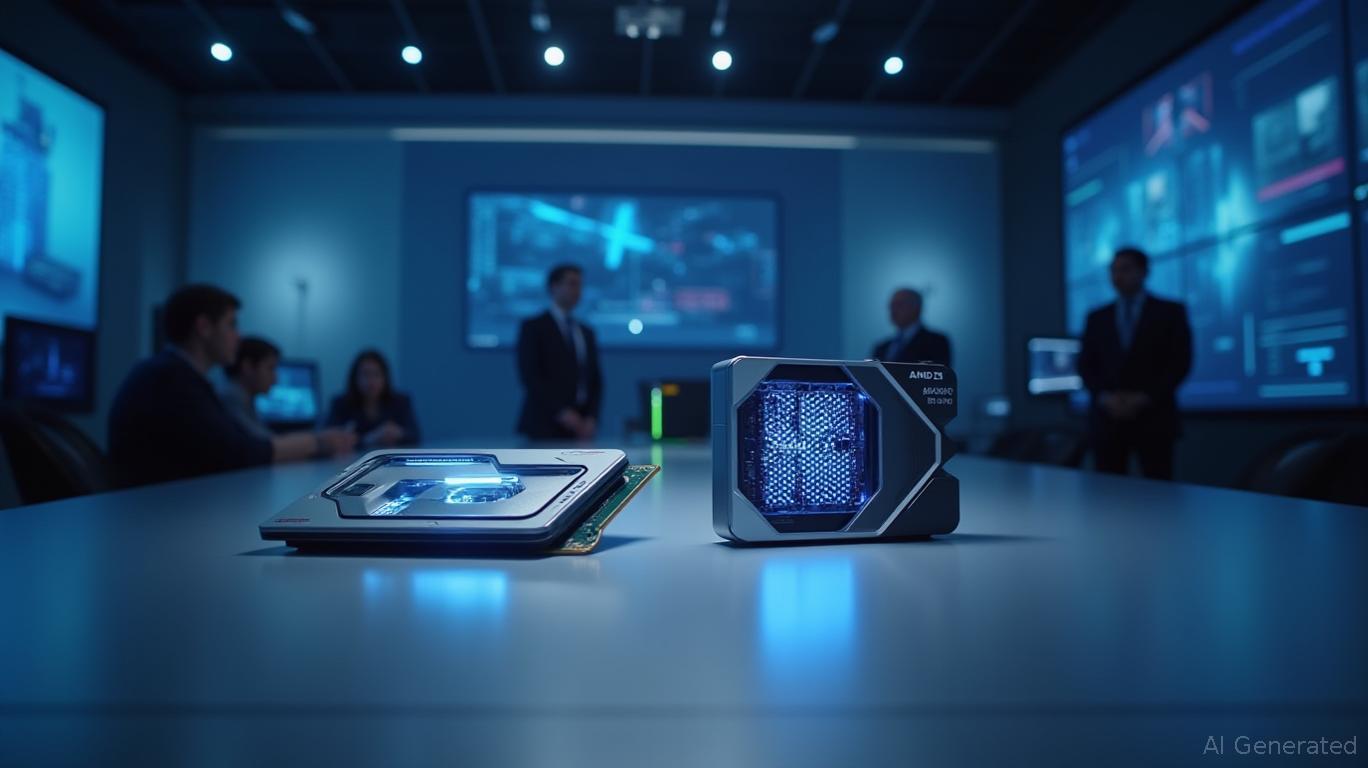
- Overcoming Nvidia’s Entrenched Ecosystem: This is arguably AMD’s biggest challenge. Nvidia’s `CUDA ecosystem` represents decades of investment, developer mindshare, and optimized software libraries. Migrating existing AI workloads from CUDA to `ROCm` requires significant effort and resources from developers and organizations. AMD must not only offer comparable performance but also a compelling reason to switch, such as superior ease of use, unique features, or significant cost savings. The inertia of an established ecosystem is powerful.
- Scaling Manufacturing to Meet Surging Demand: The global demand for AI accelerators is skyrocketing. Even with cutting-edge designs, AMD must demonstrate the ability to scale its manufacturing capabilities to meet this unprecedented demand. Supply chain reliability, yield rates, and timely delivery of high volumes will be critical. Any significant manufacturing hiccups could severely impact market penetration and customer trust.
- Keeping Pace with Innovation: The AI landscape evolves at a blistering pace. Nvidia is not standing still; they are continuously innovating in both hardware architecture (e.g., Blackwell, Rubin) and software development. AMD faces the continuous pressure of not just catching up but also anticipating future AI trends to stay competitive, demanding relentless R&D investment and agility.
Despite these formidable challenges, several key opportunities could fuel AMD’s growth and accelerate its market penetration:
- Growing Industry Demand for Diverse Hardware Options: The market is increasingly wary of reliance on a single dominant vendor. Major cloud providers and enterprises actively seek `diverse hardware options` to ensure supply chain resilience, competitive pricing, and workload flexibility. This creates a natural opening for AMD as a viable alternative.
- The Increasing Importance of Open-Source Initiatives: The industry’s lean towards `open-source initiatives` like ROCm aligns perfectly with AMD’s strategy. An open platform can foster community contribution, accelerate innovation, and reduce vendor lock-in, appealing to a broad segment of the developer community.
- Potential for Cost-Effective Performance: If AMD can consistently deliver `cost-effective performance` – offering competitive AI capabilities at a lower price point or better performance-per-watt – it could attract new customers, particularly those with budget constraints or large-scale deployments where minor cost differences multiply rapidly.
- Strategic Partnerships and Targeted Investments: Beyond OpenAI, AMD can pursue other `strategic partnerships` with AI startups, research institutions, and industry leaders to co-develop optimized solutions. Targeted investments in specific AI niches or emerging applications where Nvidia’s lead is less pronounced could open new markets and niches previously inaccessible due to Nvidia’s dominance. Leveraging its CPU dominance in the data center can also create integrated solutions appealing to customers.
Conclusion: A New Era for AI Hardware?
AMD’s aggressive strategic efforts, highlighted by the highly anticipated MI400 series and substantial investments in its software ecosystem, undeniably signal a `new chapter in the AI hardware race`. The long-standing, near-monopoly of Nvidia is facing its most formidable challenge yet, driven by AMD’s clear intent to capture significant market share in the booming AI accelerator segment. While the road ahead is certainly challenging, marked by Nvidia’s deeply entrenched ecosystem and the immense task of scaling manufacturing, AMD’s commitment to cutting-edge hardware and an open-source software stack represents a credible threat. Their strategic `OpenAI partnership` further underscores their serious intent and capability to handle top-tier AI workloads.
This intensified competition bodes well for the entire AI industry. It promises to fuel increased innovation, as both companies push the boundaries of chip design and software optimization. It will also lead to more diverse choices for consumers, offering alternatives to single-vendor reliance, and potentially driving down costs through healthy market competition. The coming years, especially leading up to and beyond 2025, are poised to deliver exciting developments. Whether `AMD can successfully chip away at Nvidia’s lead` and fundamentally reshape the AI hardware landscape remains to be seen, but one thing is certain: the competition will ultimately prove `benefiting the industry` as a whole, driving unprecedented advancements in artificial intelligence.
Frequently Asked Questions
Q1: What is the primary focus of AMD’s challenge to Nvidia in the AI chip market?
A1: AMD’s primary focus is to challenge Nvidia’s dominance in AI hardware by offering highly competitive accelerators, specifically the upcoming MI400 series, coupled with an improved open-source software ecosystem through its ROCm platform. They aim to provide a viable alternative for data centers and AI researchers.
Q2: What are the key features of AMD’s new MI400 AI accelerators?
A2: The AMD MI400 AI accelerators are projected to feature significant advancements including up to 432GB of HBM4 memory with 19.6TB/sec bandwidth, 40 PFLOPs (FP4) and 20 PFLOPs (FP8) compute performance, and enhanced interconnects offering 300GB/sec per GPU. These specifications are designed to directly compete with Nvidia’s next-gen offerings.
Q3: How important is AMD’s ROCm platform in its strategy against Nvidia?
A3: The ROCm platform is critically important. While hardware performance is vital, a robust software ecosystem is essential for developer adoption. ROCm is AMD’s open-source alternative to Nvidia’s CUDA, and AMD is heavily investing in its development to ensure it supports major AI frameworks and attracts a broad developer base. The OpenAI partnership further validates ROCm’s capabilities.
Q4: What major challenges does AMD face in challenging Nvidia’s lead?
A4: AMD faces several significant challenges, including overcoming Nvidia’s deeply entrenched CUDA ecosystem and its loyal developer community, the immense task of scaling manufacturing to meet surging global demand for AI accelerators, and the continuous pressure of keeping pace with the rapid innovation in both hardware and software within the AI industry.
Q5: How might the AI chip market evolve by 2028?
A5: By 2028, the AI chip market might evolve into a more balanced duopoly between AMD and Nvidia, or it could see further diversification with the increased emergence of custom silicon solutions from hyperscalers. Evolving AI models, such as larger LLMs and expanded edge AI applications, will also drive specialized chip designs, potentially leading to a more fragmented market.



